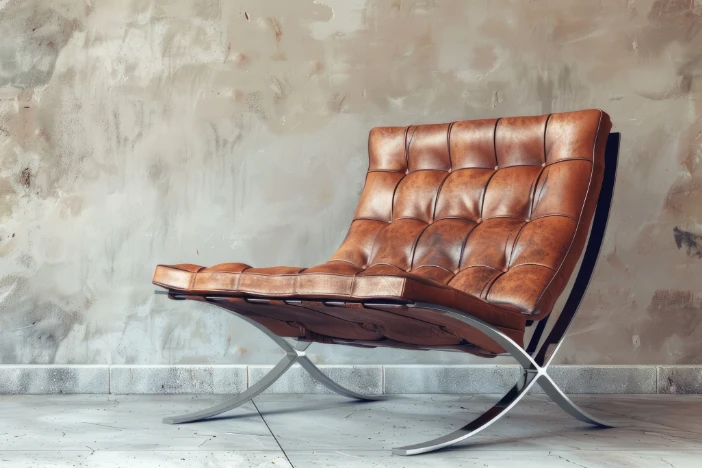
The fifth section of this thorough examination of interior design covers a gamut of aesthetics from stark simplicity to homey warmth to rigid metallic vibes.
Jacobean
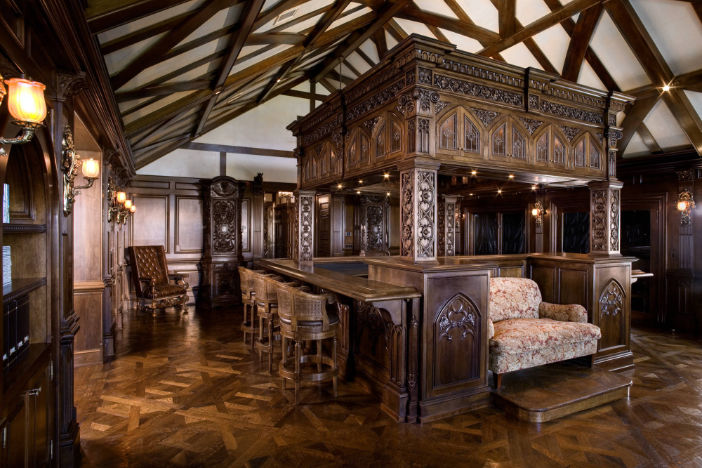
Jacobean interior design is bold, dramatic and unapologetically regal. Emerging during the reign of King James I (or James VI if you’re going by the Scottish scorecard), this early English Renaissance style is all about showstopping craftsmanship and high drama.
Oak is the star of the show—heavy, dark and richly carved. Chairs, tables and cabinets feature turned legs, scrollwork and ornate inlays that flaunt the artisan’s skill. Furniture pieces are often symmetrical and built to impress from every angle. It’s like the original version of open-concept living but in furniture form.
Heraldic motifs are everywhere. Family crests, royal emblems and mythical beasts aren’t just for show, they’re power statements carved into wood panels or stitched into tapestries. Silver accents bring in a touch of shimmer, often in the form of marine-themed sculptures. Dolphins, mermaids and seashells give a nod to exploration and trade, which was a reminder of England’s growing reach across the seas.
Texture plays a major role. Plasterwork ceilings are molded with intricate reliefs, and grand marble fireplaces anchor rooms with elegance and authority. Velvet, brocade and tapestry fabrics drape over chairs or hang from walls, adding softness to otherwise sturdy surroundings.
Though the era didn’t turn out celebrity designers in today’s sense, the work of craftsmen under royal patronage, like Inigo Jones in architecture, helped define the style’s stately tone. Jacobean design isn’t subtle but that’s exactly the point. It’s a masterclass in theatrical luxury with a crown on top.
Japandi
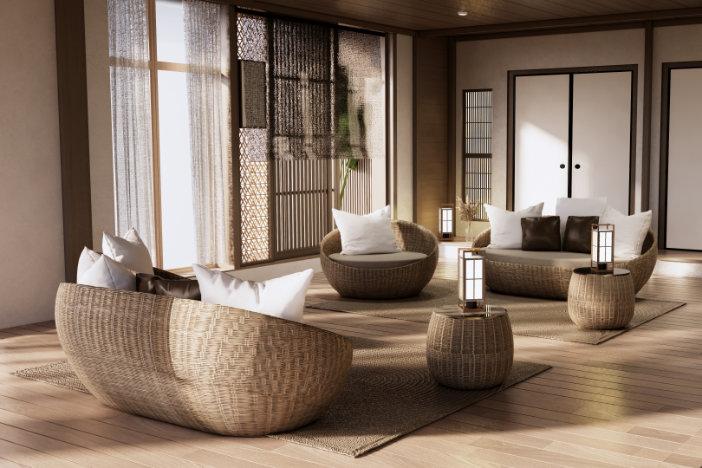
Japandi is where Japanese wabi-sabi meets Scandinavian hygge and somehow, they get along beautifully. This hybrid style blends the quiet elegance of Japan with the cozy minimalism of Scandinavia. The result? Calm, grounded interiors that feel curated, not cold.
Form follows function with clean lines, low profiles and balanced proportions. Furniture is minimal but warm, often handmade and rooted in craftsmanship. Solid wood tables, woven stools and sleek cabinets show off natural materials without extra fuss. Pieces from designers like Tadao Ando, Kaare Klint and Alvar Aalto quietly echo in the background.
The color palette is soft and earthy. Scandi whites and pale woods mix with Japanese-inspired tones like charcoal, sage, clay and ink. Textures are a sensory mix of rough and refined. Raw oak, smooth ceramics, linen, wool, bamboo and rattan all come into play.
Shoji screens, tatami-style mats and large windows invite natural light and create flow. Plants are chosen with care: bonsai trees, trailing vines and potted greens add life without chaos. You won’t find clutter here, just purposeful objects with a story, like a handmade tea bowl or a perfectly imperfect vase.
Japandi isn’t about perfection. It’s about calm, comfort and letting natural beauty take the lead. Think of it as the design version of a deep breath—steady, subtle and quietly stylish.
Japanese
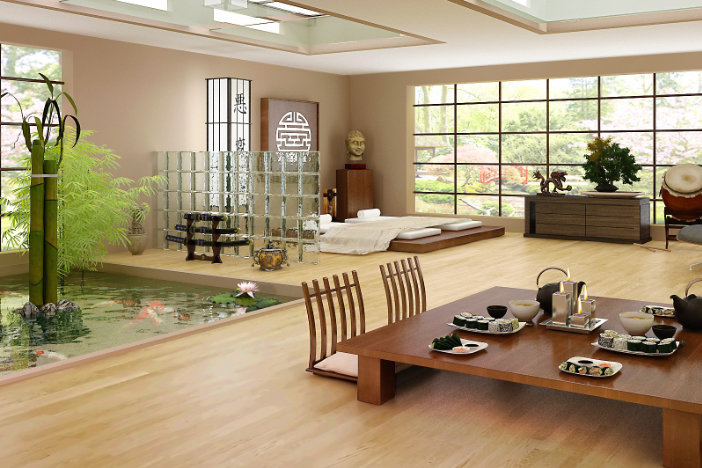
Japanese interiors give off a serene, peaceful feel thanks to a simple design style. Much like minimalist design, Japanese interiors put a focus on uncluttered spaces, clean lines and balance. Sliding doors are often used to create a seamless transition from one room to the next. Natural wood and stone are heavily used throughout the home. Outdoor elements like rock gardens, fountains, ferns, bonsai and bamboo are also utilized. Furniture is large and usually square or rectangular and pieces like chairs and sofas sit low to the ground. Large glass doors provide inspiration and access to nature. Shojis are essential design elements in traditional Japanese homes. These sliding doors or room dividers have a lightweight wooden frame and are made from translucent washi paper that permits natural light to pass through.
Lake House
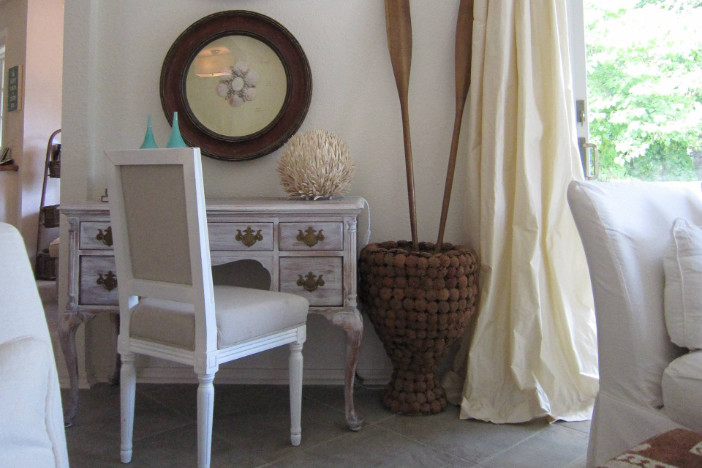
The Lake House aesthetic is all about laid-back comfort with a view. It captures the spirit of weekend getaways, sunset paddles and early morning coffee on the dock. The style leans into simplicity but knows how to make it feel warm and effortless.
Natural light is a must. Expansive picture windows, French doors and the occasional skylight are used to bring the outdoors in. The scenery does most of the heavy lifting, so interiors stay quiet and grounded. Color palettes favor soft neutrals such as warm whites, sandy taupes, misty blues and weathered grays. These shades reflect the natural surroundings without competing with them.
Texture is key. Picture exposed beams, rough-hewn wood, natural stone, nubby linen, woven rattan and maybe a wool throw or two for chilly nights. Architecture isn’t polished to perfection. It’s appreciated for its character, whether that means wide-plank floors, knotty pine walls or a brick fireplace that’s seen a few decades of s’mores.
Furniture is relaxed and functional. Overstuffed sofas, vintage camp stools and farmhouse tables all have a place here. Designers like Thomas O’Brien and Ralph Lauren have brought upscale touches to this rustic genre but the soul of the lake house remains unpretentious and lived-in.
Decor often borrows straight from nature with driftwood, river stones, pressed leaves and the occasional pair of antique oars. A lake house doesn’t need much to feel complete. It’s the kind of place where your muddy boots are welcome and the Wi-Fi signal is happily weak.
Machine Age
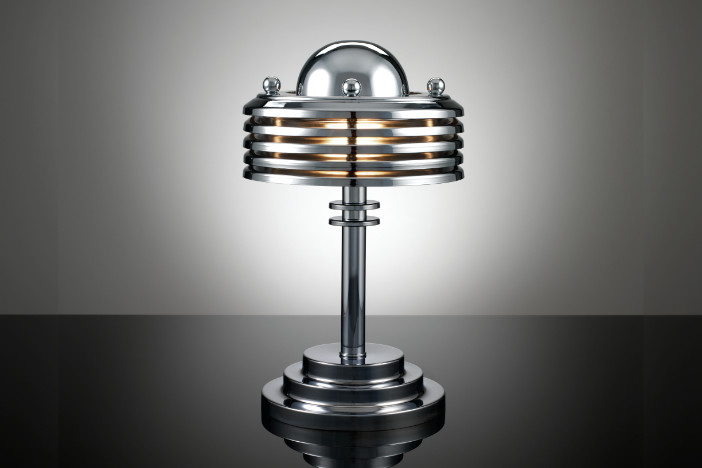
Machine Age style is where industrial grit meets early 20th-century optimism about technology. Born out of the post-WWI fascination with speed, precision and innovation, this look echoes the rise of the assembly line, steam engine and dream that machines could make life better and even stylish.
Form is sleek and efficient with no frills, just function. Geometric shapes, aerodynamic curves and mechanical symmetry define the look. Materials are raw and honest. Brushed steel, riveted metal, concrete, exposed brick and reclaimed wood are prevalent. Texture is key but it’s more engine room than farmhouse. Imagine polished aluminum next to rough concrete or leather against chrome.
Color palettes stay firmly neutral with layered grays, deep browns, blacks and off-whites. Splashes of industrial green or navy might sneak in but the tone stays cool and composed. Iconography leans mechanical with lightning bolts, gears and radio waves [Meikle 2010]. It’s like a Bauhaus blueprint that’s been to engineering school.
Furnishings include iconic pieces like Donald Deskey’s metal-inlaid desks and the tubular steel chairs of Marcel Breuer. Even Raymond Loewy, the godfather of industrial design, left his fingerprint on Machine Age aesthetics. His streamlined radios, cars and home accents look like they could still launch a spaceship.
Vintage road signs, oversized clocks and WWII-era studio lights add character and narrative. And if your living room feels like a set piece from Metropolis or Modern Times, you’re doing it right.
In short, Machine Age design is what happens when modernism puts on a leather jacket and heads to the factory.
Maximalist
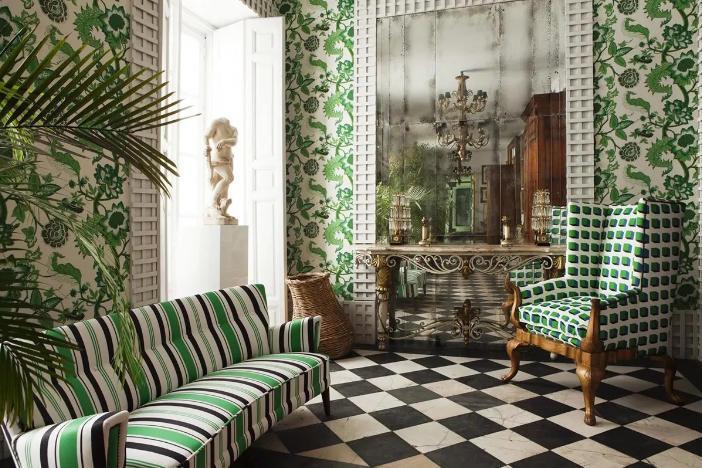
If minimalism whispers, maximalism belts out a Broadway number in sequins. But don’t mistake it for chaos. True maximalist interior design is exuberant and intentional. It’s about telling your story through layers of furniture, art, color and texture, all curated like a personal museum with better lighting and more throw pillows.
Maximalist spaces thrive on contrast and personality. Rich jewel tones such as emerald, sapphire, ruby and fuchsia dominate the palette. Theuy’re often paired boldly but thoughtfully. Wallpaper? Yes, and the louder the better. Picture florals, geometrics or exotic prints that act as both backdrop and main event. Walls don’t stop at wallpaper either. They’re usually decked with an eclectic gallery of paintings, prints, portraits and oddities collected over time.
Furniture is often oversized, sculptural or historically inspired and sometimes all three. Velvet chesterfields, lacquered cocktail tables and antique credenzas coexist happily. Iconic designers like Tony Duquette and Kelly Wearstler are maximalist royalty, known for layering color, texture and whimsy like it’s a competitive sport.
Texture plays a starring role. Velvet, fringe, brass, shagreen and glossy finishes add glam and depth. Gilded frames, mirrored surfaces and ornamental lighting dial up the drama.
Maximalism embraces pattern-on-pattern, color-on-color and “more is more” as long as it’s personal. That quirky lamp from your trip to Marrakesh? Display it. Vintage leopard-print ottoman? Of course. It’s all about joyfully rejecting beige sameness in favor of curated excess that feels like you.
In short: maximalism isn’t clutter. It’s character, turned all the way up.
Medieval
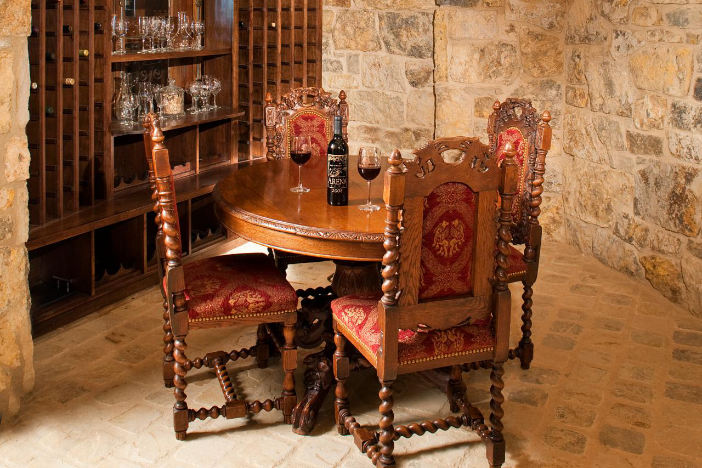
Medieval design brings the grandeur of the Middle Ages indoors, minus the drafty moat and armored guards, of course. It’s heavily influenced by Gothic architecture. This style is all about drama, craftsmanship and a touch of noble flair. Imagine stone walls, dark wood beams and the kind of furniture that looks like it could double as a throne.
Medieval form is solid and substantial without delicate curves. Furniture is large, heavy and often hand-carved with intricate motifs like vines, lions or religious symbols. Long trestle tables, high-backed chairs and four-poster beds with canopies are signature pieces. Upholstery tends to be luxurious with fabrics like velvet, silk and brocade adding richness and warmth.
Textures are deeply layered. Aged wood, wrought iron, hammered metal and stone all play major roles in this aesthetic. Walls are often dressed with grand tapestries embroidered with heraldic crests, medieval battles or mythological tales. Back in the day, they served both decorative and practical purposes (hello, insulation). Metal rods and tasseled trims complete the look.
Color schemes are bold and moody, featuring deep crimson, forest green, royal blue and antique gold. These hues show up in rugs, wall hangings and stained glass accents that cast jewel-toned light across the space.
While the medieval period predates celebrity designers, William Morris and other Arts & Crafts revivalists reimagined the style in the 19th century. Shows like Game of Thrones and The Witcher have brought renewed love for this aesthetic—minus the plague, of course.
In short, medieval interiors are less “ye olde dungeon” and more “lords, ladies and lots of carved oak.”
Mediterranean
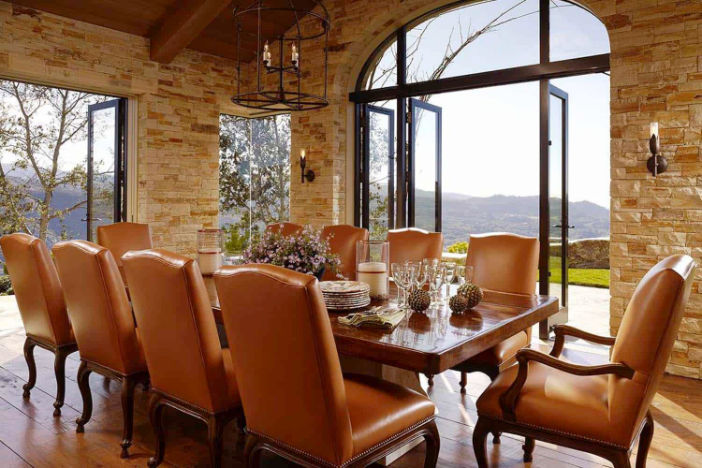
Mediterranean interiors bring the warmth, color and laid-back elegance of southern Europe straight into the home. Inspired by the coastal lifestyles of Spain, Greece and Italy, this style is sunny, rustic and refreshingly unpretentious—more villa than Versailles.
Color plays a starring role with sun-drenched hues like terracotta, oceanic turquoise, olive green and buttery yellow reflecting the natural surroundings of the region. Whitewashed walls serve as a breezy backdrop, allowing mosaic tilework to shine on everything from stair risers and tabletops to backsplashes and bathroom floors. These decorative tiles add a hand-crafted charm that’s both artisanal and functional.
Furniture tends to be low-slung and inviting with carved wooden legs, scrolled iron accents and a distinctly relaxed posture. Upholstery tends to be casual with linen, cotton and leather in earthy tones. Designers like Renzo Mongiardino brought a maximalist flair to Mediterranean style, while Axel Vervoordt’s serene Belgian-meets-Mediterranean spaces offer a more restrained take.
Texture is everywhere with stucco walls, exposed ceiling beams, wrought iron railings and weathered stone floors all contributing to the style’s tactile richness. Picture windows, arched doorways and indoor-outdoor transitions are essential, letting the breeze (and maybe the scent of lemon trees) drift through the space.
Red-tiled rooftops and balconies wrapped in wrought iron are classic architectural features but indoors, the goal is comfort with soul. It’s the kind of place where you can sip wine barefoot, surrounded by hand-thrown pottery, breezy curtains and sunlight that never feels like it’s trying too hard.
Memphis
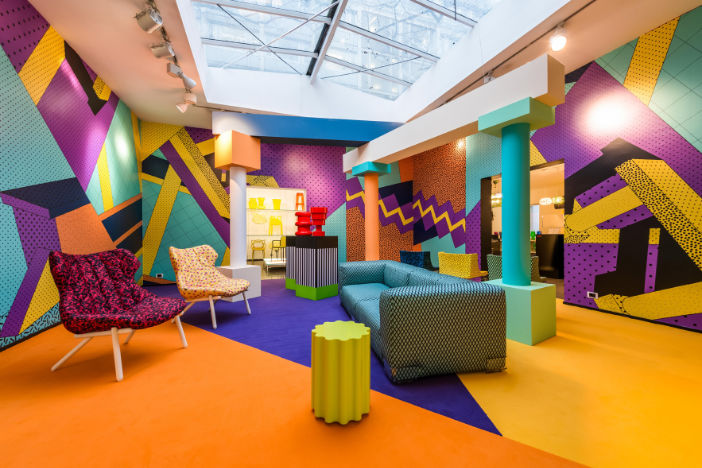
In the 1980s, Italian designer Ettore Sottsass founded the Memphis Group as a post-modern reaction to the straight lines and structured functionalism of Mid-Century Modern and the minimalism of the 1970s. Memphis style is colorful and abstract with atypical shapes and asymmetry driven by form and not function. It’s meant to provoke an emotional response and this outrageous contemporary aesthetic was once described as a “shotgun wedding between Bauhaus and Fisher-Price.” It was inspired by Art Deco and pop art, as evidenced by the frequent use of black and white stripes, zigzags and bold contrasts in color.
Plastic laminate, MDF and terrazzo materials are used in flooring or to construct multi-colored furnishings. Squiggles (a.k.a. bacterio print) are often incorporated on patterned surfaces. Some notable items in Memphis style include Sottsass’ Ashoka Lamp and Carlton Bookcase, and the open Panda Cabinets by Paola Navone. “Pee Wee’s Playhouse” infused Memphis style into the show’s set design to reinforce the vibrant and quirky tone.
Mexican
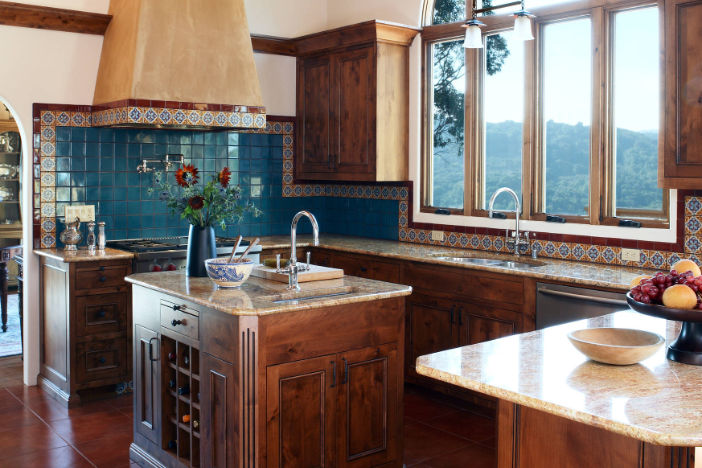
Mexican-inspired homes deliver a similar feel to eclectic interiors. Numerous bold colors are used, such as bright pinks, greens, oranges, reds and yellows. Candlesticks, ceramic pots, ironware and hand-sewn rugs also bring personality into a Mexican home. The pottery often has intricate and colorful designs influenced by the flora and fauna found in Mexico. Chairs, tables and sofas boast an elegant look, with influences of Spanish colonial and Tuscan style. Mexican furniture can either come with a refined, stained dark wood or weathered wood for a more casual, rustic beauty. Prints and patterns like mosaic can be found on everything from tiles to pillows. Many Mexican kitchen backsplashes or bathroom feature traditional hand-painted Talavera tiles. This colorful tin-glazed majolica earthen pottery was popular in monasteries and churches in Mexico in the late 1600s and early 1700s.
Mid-Century Modern
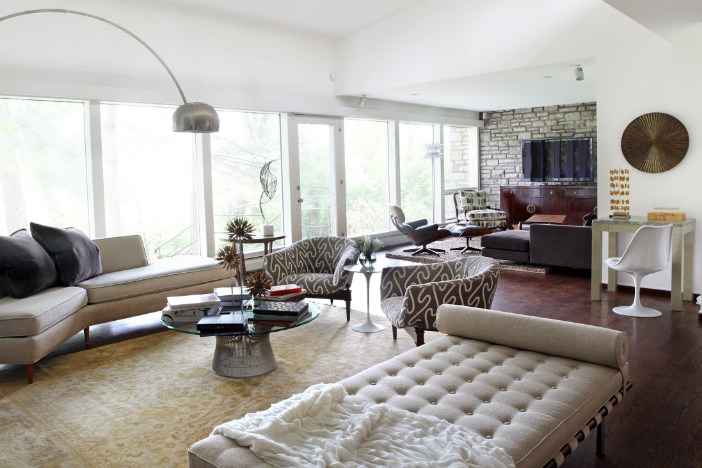
Mid-century modern isn’t just a design style—it’s an attitude, packing as much charisma as a Don Draper Mad Men monologue. Born in the post-war 1940s and peaking through the ‘70s, this style is famous for clean lines, airy layouts and open-hearted devotion to natural light. Architects and designers aimed to erase the boundaries between inside and out. Sliding glass doors? Check. Floor-to-ceiling windows? Double-check. Let’s face it, curtains are just distractions from the main event—the view.
Let’s talk shape. The mid-century modern form is streamlined and balanced, never clinical. Pieces sit low with iconic tapered legs and inviting, organic curves. Imagine the sculptural Tulip table by Eero Saarinen, the Eames lounge chair that’s practically a celebrity cameo in itself, or George Nelson’s quirky Marshmallow sofa. Function always keeps up with fashion. Materials like molded plywood, fiberglass, steel and leather give it an industrial edge but it never feels cold, thanks to plenty of walnut and teak lending rich warmth.
Texture is all about harmony. Surfaces are smooth, finishes stay honest, but there’s always room for a shag rug to keep things interesting. Color ranges from earthy neutrals to lively hits of mustard, avocado or peacock blue—one foot in nature, the other dancing on Andy Warhol’s palette. Geometric patterns make a statement but never steal the show.
Want the hall of fame? Think Frank Lloyd Wright, Arne Jacobsen, Isamu Noguchi, Hans Wegner and of course, Mies van der Rohe—the OG of “less is more.” Mid-century modern is more than nostalgia: it’s timeless swagger in every square foot.
Minimalist
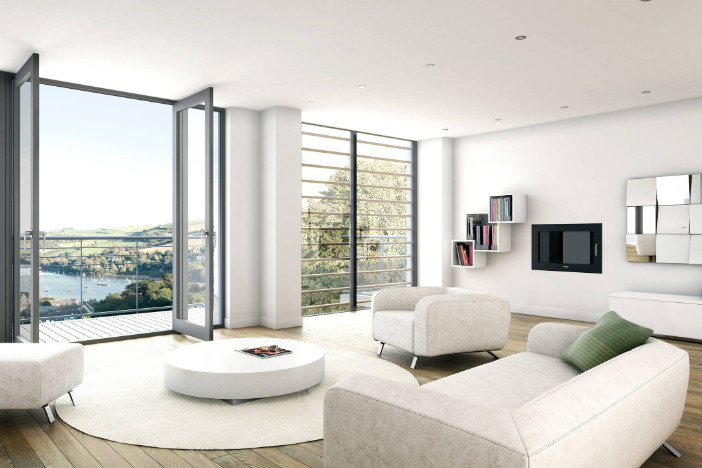
Minimalist homes are free of any clutter, only displaying items like couches, tables and light fixtures that are essential for functional living. Interiors have a focus on simplicity and effortless beauty. Character is brought forth not through detail, but through natural materials and essential items. Rooms are monochromatic, usually featuring subdued neutrals. Walls are kept simple with only one or two decorative pieces, like a canvas or a mirror. All surfaces, from the kitchen to the bathroom should be completely cleared off. Furniture features clean lines with very little detail, and they often double as storage, like ottomans that open up to reveal space. Architectural minimalism is influenced by Japanese Zen philosophy and the aesthetic principles of Ma and Wabi-sabi, which appreciate the value of empty space and absence of ornamentation.
Mission

The Mission aesthetic is rooted in the Arts and Crafts movement and is all about honest craftsmanship and sturdy simplicity. It’s the no-nonsense cousin of Victorian excess, where form follows function and beauty comes from materials, not embellishment.
Furniture is solid, grounded and usually made of oak. Expect clean lines, vertical slats and exposed joinery. Chairs and tables have a handcrafted feel with wide arms, straight legs and minimal decoration. Iconic pieces include the Morris chair, a reclining armchair with wood slats and comfy cushions that basically invented lounging before it was cool.
Color palettes are warm and earthy. Think cream, clay, olive, rust and rich browns that highlight the natural grain of the wood. Walls are often kept neutral but can be dressed up with wallpaper featuring stylized nature patterns. These include leaves, vines and florals, often in muted tones. Texture comes from the interplay between smooth wood finishes, hand-hammered metal hardware and simple textiles like linen or wool.
Mission style gets its name from the furnishings found in Spanish missions across California but the style really took off thanks to designers like Gustav Stickley and the Roycroft community. A.J. Forbes helped spark it with a custom chair for the Swedenborgian Church in San Francisco.
Mission design doesn’t shout. It doesn’t need to. It’s built to last, quietly elegant and still makes a case for craftsmanship in a world of mass production.
Modern
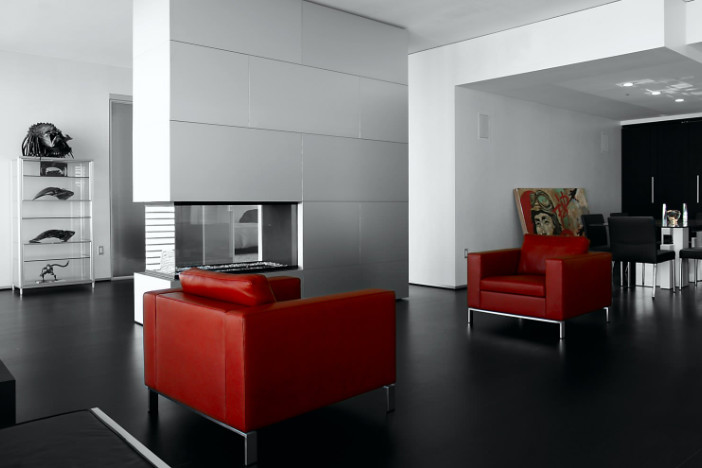
Modern homes share similar characteristics with minimalist interiors. The focus is on simplicity, cleanliness and absence of decor or detailing. Modern furniture offers smooth, clean lines inspired by architecture from the 1930s. It’s this testament to the sensibilities of the Bauhaus movement and Scandinavian design principles that sets modern interior design apart from contemporary style. Color palettes are typically made up of neutral shades, such as whites, creams and beiges. However, unlike minimalist interiors, these homes contain splashes of bright colors like oranges, pinks and turquoise on items such as dinnerware, curtains and rugs. All electronics in modern interiors are streamlined, so living rooms contain built-in DVD players and kitchens have small flat-screen televisions. Plastic and plywood are frequently utilized in modern style furnishings.
Modernist
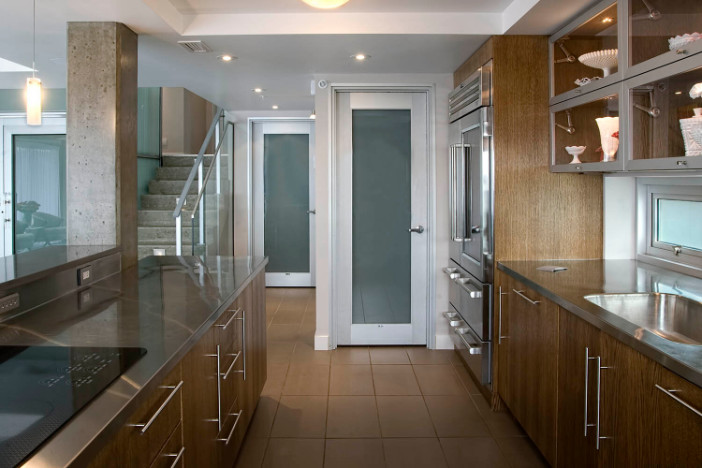
Modernist style, otherwise known as international style, was inspired by 1920s minimalist architecture. It focuses on natural materials like steel, glass and reinforced concrete, which are used on floors, countertops and appliances because of their lack of detail and ornamentation. Geometric shapes are emphasized through the use of tables, chairs and desks. Fabrics like curtains and bed linens feature a balanced mix of solids and bold, graphic patterns. As for modernist color palettes, gray is a commonly used hue due to its versatility and its sophisticated, upscale look. Prominent Modernist designers include Le Corbusier and Arne Jacobsen.
Moroccan
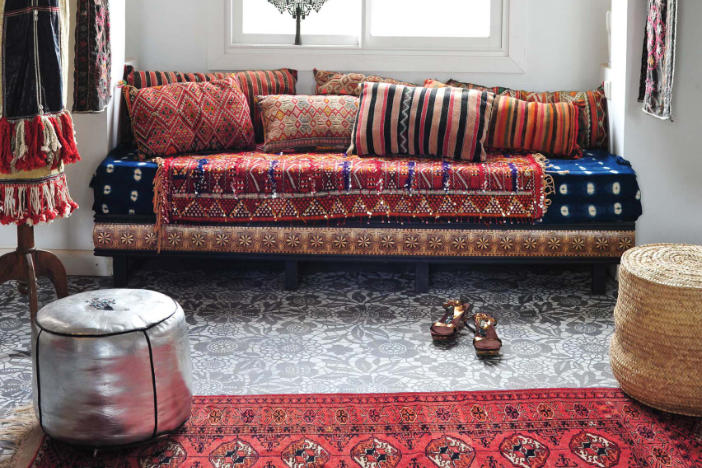
Moroccan interiors can be compared to Bohemian and eclectic homes, as Moroccan home design combines a variety of colors and patterns to bring character to a space. The shades used in Moroccan homes, however, are mainly deep jewel tones like emeralds, royal blues and bold purples – vibrant reminders of the colorful flea markets of ancient Marrakech. Furniture is ornately carved with wooden accents and is upholstered with luxurious fabrics like silk and velvet. Fabrics feature colorful mosaic patterns and interiors are illuminated with intricately detailed metal lamps. Ceramic or terracotta floor and wall tiles are frequently used throughout the kitchen and dining room or in mosaics. Vibrantly colored rugs, ottomans, poufs and cushions add exotic but laid back opulence. The low seating and lounge tables are also hallmarks of Moroccan design. The relaxed feeling is augmented by plush cushions and the abundance of leafy green plants.
Guide Sections
References

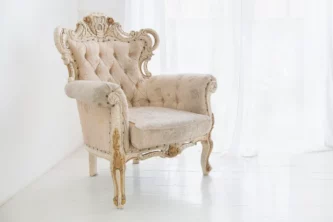
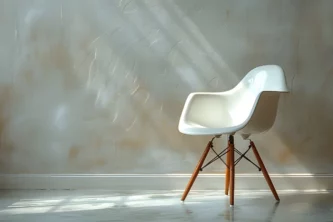
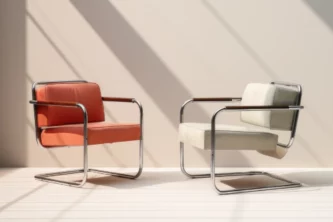
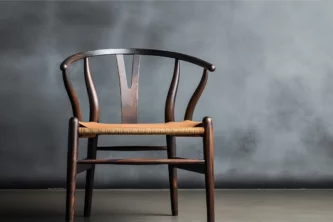
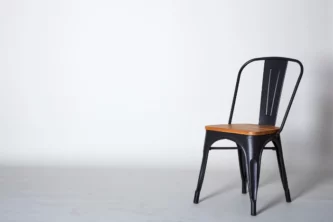
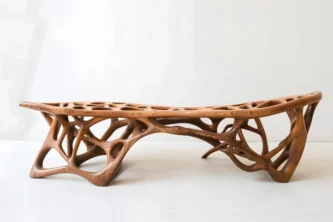
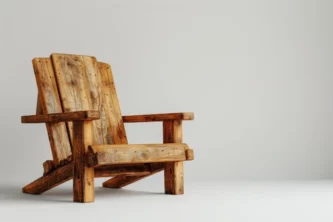
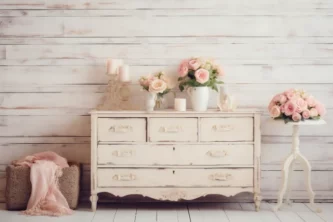
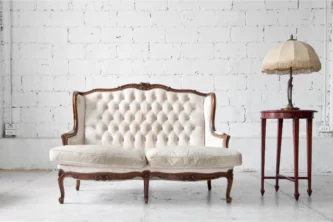




Leave a Reply